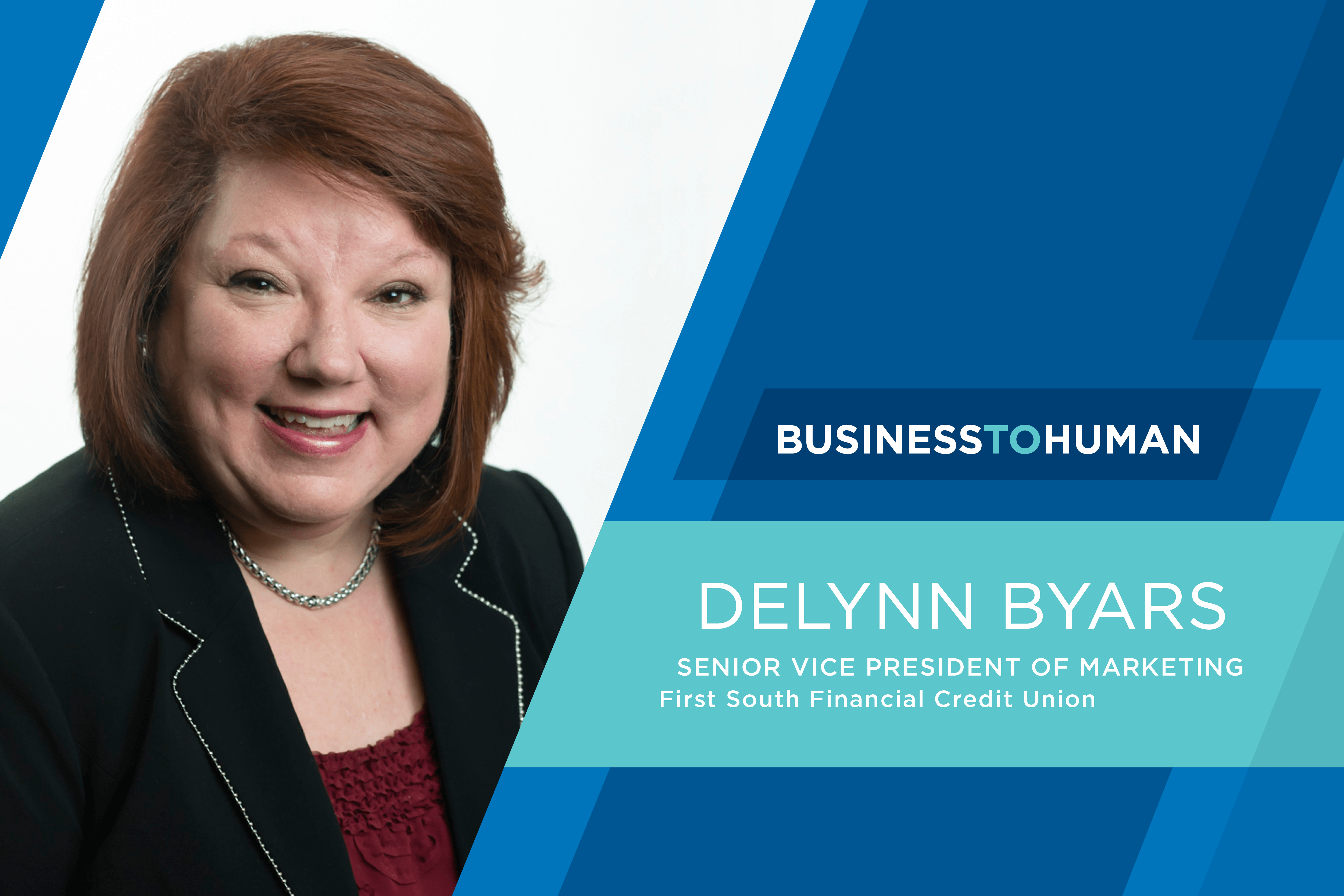Growing business in a financial institution is not always about attracting new customers and members. One of the most effective methods, in fact, comes through deepening existing relationships with those who may not have actively chosen your institution in the first place.
But how do you do that effectively? This is the topic covered by our guest, Delynn Byars of First South Financial Credit Union, in this episode of our Business to Human podcast.
Not all financial institutions are big enough to leverage size as a market advantage. Unlimited marketing budgets are not always an available tool. So even smaller institutions that can clarify and fine-tune their messaging to specific targets, so-called “indirect loan customers,” can produce strong results regardless of their size.
About the guest:
Delynn Byars is Senior Vice President of Marketing at First South Financial Credit Union, a member-owned, federally insured financial institution serving over 60,000 members worldwide. With more than 25 years of industry experience, Byars talks with us about the marketing challenges she faces at First South FCU.
A SIGNIFICANT OPPORTUNITY
Indirect loan customers are those who may have been introduced to your institution through a third party. Byars describes them as people who opened an auto loan through the dealership rather than actively choosing a loan through their credit union.
Indirect loans are offered by secondary parties directly to consumers. For example, auto dealerships can offer loans to their customers through a credit union. Therefore, when a customer receives an auto loan, they do not work directly with the financial institution. Rather, the dealership does much of the communication.
As a result, you may have to work to establish a new, direct line of communication to these loan customers.
In the case of First South Financial Credit Union, these indirect connections make up a large portion of the member base.
Opening up a channel of communication
While these individuals are First South FCU members, the relationship often ends when the auto loan has been paid off. The member perceives the relationship to be between themselves and the dealership blocking any opportunity to establish a strong, long-term relationship.
To look at it from an alternative angle, indirect loan customers exist as a potential pool of long-term customers. These individuals have already utilized loans through your organization but have not worked directly with your team and may not be aware of existing opportunities.
It can be difficult to translate these groups of indirect customers into full customers, but it is possible.
Obstacles to conversion
According to Byars, the biggest challenge in converting their leads from indirect loans to fully engaged and loyal members is lack of knowledge.
When people indirectly utilize a bank or credit union, they often do so without making a conscious decision. Byars explains, “When purchasing at a dealership, people see the rates good, the terms good, the payments are what they wanted. So, there’s no relationship with us because it’s not that conscious choice.”
Simply, awareness of the lender and its value to the borrower is the thing that keeps them from building an active relationship.
Byars suggests incorporating more communication that is true to your brand throughout the onboarding process. Offer an initial touchpoint that welcomes customers and members to your institution’s brand, then provide all of the necessary information regarding the loan: where and when to pay, how to reach out for support, and their various options.
Next, personalize offers with lender-specific data points to share other credit opportunities.
Research at First South reveals their indirect members are likely not interested in checking accounts. Instead, the data supports the idea that credit products are a popular way to transition indirect members to full-fledged returning users.
Utilize the data to understand what indirect customers want. Then, work to educate them on the benefits of returning to your institution for these products to extend and deepen their relationship with you.
To best build these relationships and target offerings and education, a strong marketing toolkit and sales team need to exist within your organization. But, according to Byars, something very important is missing from the marketing ecosystem.
What is missing from the marketing toolkit ecosystem?
Data matters when converting indirect leads to long-term loyal customers and members. But be careful, Byars says, these data points can become disorganized silos that do nothing to further your financial institution or serve customers and members.
Byars notes one major thing missing from the marketing toolkit ecosystem: an organized, automatic data warehouse with a simple interface.
“It would be game-changing to have one very simple interface or perfectly working API that would plug in all the data that you want with one very easy-to-use interface,” she explains, “where sales could go pull the reports, marketing could pull reports, and you could very easily create marketing dashboards or operational dashboards.”
While some vendors are slowly working in this direction, to date, no products have come to fruition. This leaves plenty of room for innovation across the industry to meet the need.
Want to listen to the rest of the conversation? You can listen in on episode one of the Business to Human Podcast. If you like what you hear, consider subscribing to the show on Apple Podcasts.
